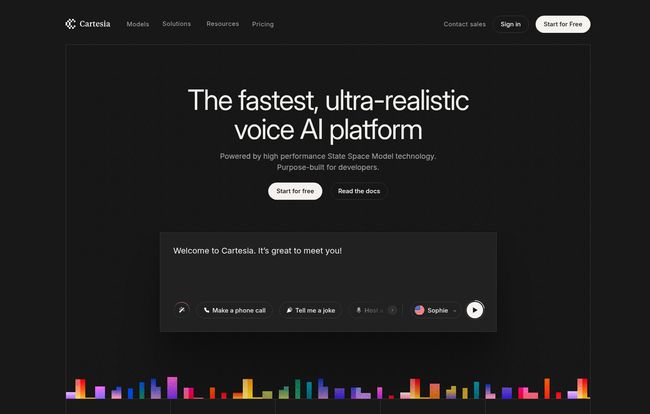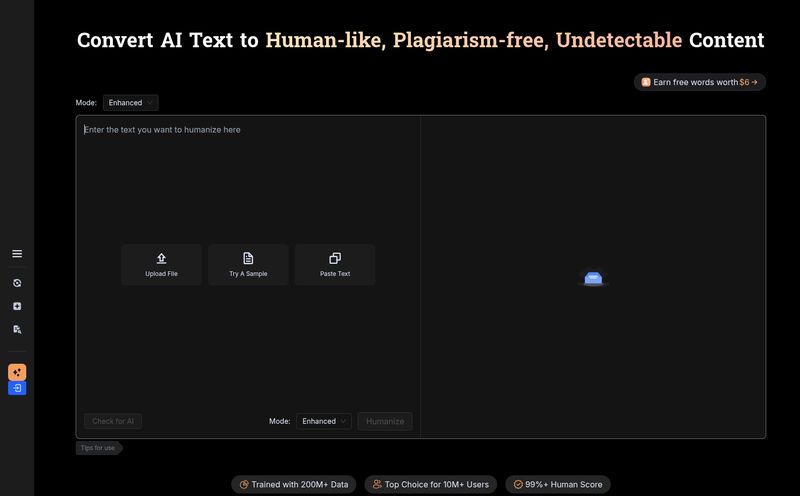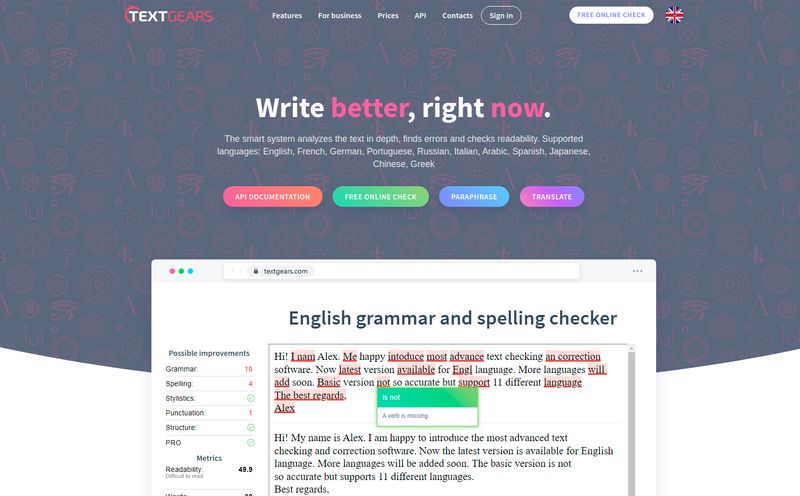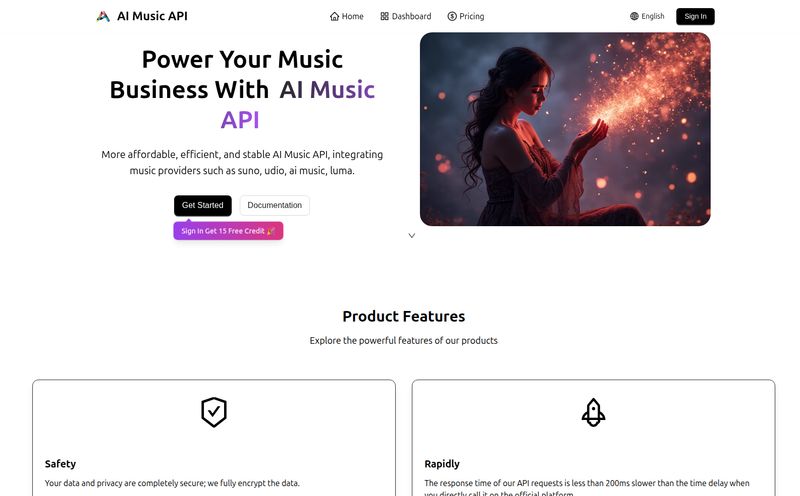I’ve been in the SEO and digital marketing game for years, and if there’s one thing that’s always bugged me, it's the voice of AI. You know the one. That slightly-too-perfect, yet oddly soulless monotone that reads you directions or answers your customer service queries. It’s been a staple of the “uncanny valley” for a decade. Close, but no cigar. It always felt like we were stuck with voices that sounded like a GPS navigator trying to recite poetry.
But every now and then, a tool comes along that makes you sit up and pay attention. One that feels less like an iteration and more like a leap. Lately, for me, that tool has been Cartesia. I’ve been hearing the whispers in developer communities and seeing the name pop up. Their claim? Ultra-realistic voice AI. A bold claim, and one I was frankly pretty skeptical of. So, I decided to pull back the curtain and see if Cartesia is just more of the same, or if it's genuinely the start of something new for interactive voice.
So, What Exactly Is This Cartesia Thing?
At its core, Cartesia isn't an app you download on your phone. It’s a platform, a powerful set of tools designed for developers to build with. Think of it as giving the creators of apps and services a new box of crayons – except these crayons can speak, in almost any language, and sound startlingly real. Their whole mission is to create “ubiquitous, interactive intelligence that runs wherever you are.” Big words, but the idea is simple: make voice interactions natural, immediate, and everywhere.
They’re not just building another text-to-speech (TTS) engine. They’re focused on the entire experience, from the sound of the voice to the speed at which it responds. And that speed, or lack of delay, is where things get really interesting.

Visit Cartesia
The “Sonic” Boom: Why Low Latency Changes Everything
Cartesia’s flagship model is called Sonic. And the name is apt. The biggest hurdle for truly interactive AI voice agents has always been latency. Latency is that awkward pause between you finishing your sentence and the AI starting its reply. Even a half-second delay makes a conversation feel stilted and unnatural. It’s the difference between a fluid chat with a friend and a clunky walkie-talkie conversation. “How can I help you? Over.”
This is what has kept most voicebots in the realm of simple commands. Anything more complex and the lag just kills the experience. Cartesia’s Sonic model boasts incredibly low latency, aiming for real-time responses that mimic human conversation. We’re talking about creating voice agents you can actually talk with, not just talk at. Combine that speed with what they call “best-in-class pronunciations”—and thank goodness for that, I'm tired of hearing AIs butcher names and locations—and you have a recipe for something genuinely disruptive.
More Than Just a Pretty Voice: A Look at the Core Features
A fast, realistic voice is great, but it’s nothing without the tools to build something meaningful with it. Cartesia seems to understand this, offering a suite of features that feels both practical and a little bit sci-fi.
The Magic of Voice Cloning and Infilling
Okay, this is the part that feels like it’s straight out of the future. Voice cloning allows you to create a digital replica of a specific voice. For brands, this is huge. Imagine your entire customer service experience, from the phone system to the in-app assistant, speaking with a single, consistent, and recognizable brand voice. Then there’s voice infilling, which is the ability to dynamically insert new words or phrases into a pre-recorded audio clip without it sounding jarring or edited. Think personalized audio ads that can insert a listener's name or a local landmark on the fly. It's wild stuff.
Speaking Your Language (Literally)
In our global market, being monolingual is a death sentence for any scalable platform. Cartesia supports over 15 languages out of the box, including English, Spanish, German, Hindi, and Japanese. This isn't just a tacked-on feature; it’s a core part of making their AI truly “ubiquitous.” For businesses looking to create consistent user experiences across different regions, this is a massive advantage.
Integrations and Flexible Deployments
A powerful API is useless if it’s a pain to integrate. The team behind Cartesia clearly gets this, offering seamless integrations with platforms developers are already using, like Twilio, LiveKit, and Rasa. But what really caught my eye was the deployment options. You can use their cloud service, or—and this is a big one for enterprise clients—deploy it on-premise or on-device. For any company dealing with sensitive data or needing to comply with strict regulations like GDPR, the ability to keep everything in-house is not just a preference; it’s a requirement.
The All-Important Question: Cartesia's Pricing
Alright, let’s talk money. This is where a lot of great tech falls down for startups and individual developers. I’ll admit, the pricing wasn’t immediately obvious on their main homepage, which is a small pet peeve of mine. But once you find the pricing page, it's refreshingly clear and tiered. It looks like they’ve tried to cater to everyone from the solo hobbyist to the massive corporation.
| Plan | Price | Best For | Key Features |
|---|---|---|---|
| Free | $0/month | Hobbyists & Testing | 20k credits, TTS, 15 Languages, Voice Cloning |
| Pro | $5/month | Individual Developers | 100k credits, Instant Cloning |
| Startup | $49/month | Small Teams & Startups | 1.25M credits, Organizations |
| Scale | $299/month | Growing Businesses | 8M credits, 99.9% uptime SLA |
| Enterprise | Contact Us | Large-Scale Operations | Custom models, On-prem deployment, Dedicated support |
In my opinion, this is a smart structure. The free tier is genuinely useful, giving you enough credits to really kick the tires and build a proof-of-concept. The Pro and Startup tiers seem perfectly positioned for small-scale commercial projects, while Scale and Enterprise are clearly for the big leagues. It’s a model that lets you grow with the platform.
My Honest Take: The Good and The Not-So-Good
No tool is perfect, so let’s get real.
The good is obvious. The potential for truly natural, low-latency voice interaction is immense. For anyone building interactive voice applications, this could be a total game-changer. The flexibility in deployment, strong language support, and futuristic features like voice cloning make it a developer's dream playground. I'm genuinely excited to see what people build with this.
On the flip side, this is not a tool for the average joe. The website makes it clear: this is for developers. You'll need to be comfortable working with APIs and have a solid technical foundation to get the most out of it. This isn't for the faint of heart, you'll need some technial know-how to integrate it properly. And while the tiered pricing is transparent, you can bet that the most powerful features and dedicated support are locked away in that “Contact Us” Enterprise tier.
Still, the praise from companies like Quora and Blindspot isn't just marketing fluff. As Spencer Chan from Quora put it,
With Cartesia’s Sonic model, we can now reliably stream speech with very low latencies... enhancing their overall experience on our platform.
When a platform built on user-generated content says it improves their experience, that carries some weight.
Frequently Asked Questions About Cartesia
- How much does Cartesia cost to get started?
- It's actually free to start. Cartesia offers a Free tier that includes 20,000 credits, text-to-speech, and even voice cloning, which is more than enough to test its capabilities for a personal project.
- Is Cartesia's AI voice truly realistic?
- Based on their demos and focus, yes. Their main selling points are the ultra-realistic sound and, more importantly, the extremely low latency of their Sonic model, which makes interactions feel much more natural and human-like than traditional TTS systems.
- Can I use Cartesia with my existing tools like Twilio?
- Yes. Cartesia is built to be developer-friendly and offers seamless integrations with popular platforms like Twilio, Pipecat, LiveKit, and Rasa to fit into existing workflows.
- Do I need to be a programmer to use Cartesia?
- Pretty much. Cartesia is an API-first platform designed for developers to integrate into their own applications and services. It’s not a standalone consumer product.
- What languages does Cartesia support?
- Currently, Cartesia offers native speech in over 15 languages, including major world languages like English, Spanish, German, French, Hindi, and Portuguese, making it suitable for global applications.
Final Thoughts: Are We There Yet?
For years, we’ve been promised truly conversational AI. With every Siri or Alexa update, we got a little closer, but the illusion was always fragile, easily shattered by a misplaced word or a moment of lag. Cartesia feels different. It feels less like an illusion and more like an authentic conversation waiting to happen. It's not a consumer-facing product that will change the world overnight, but it might just be the tool that allows developers to build the things that do.
It's a platform for the builders, the creators, and the innovators who have been waiting for the technology to catch up with their imagination. The future of voice is here, and it sounds a lot more like us. And I, for one, am here for it.



